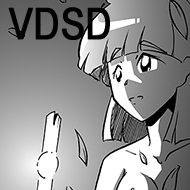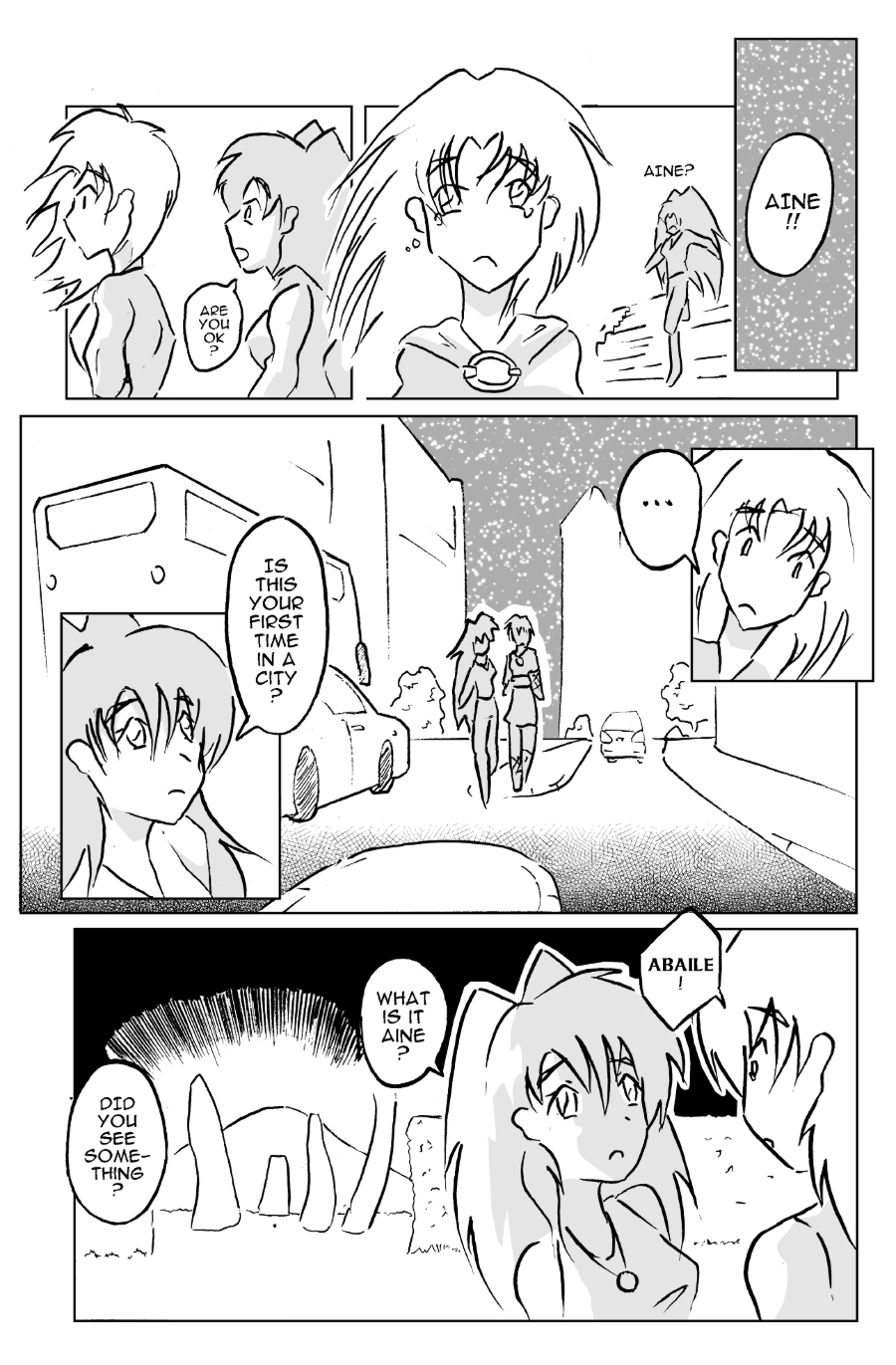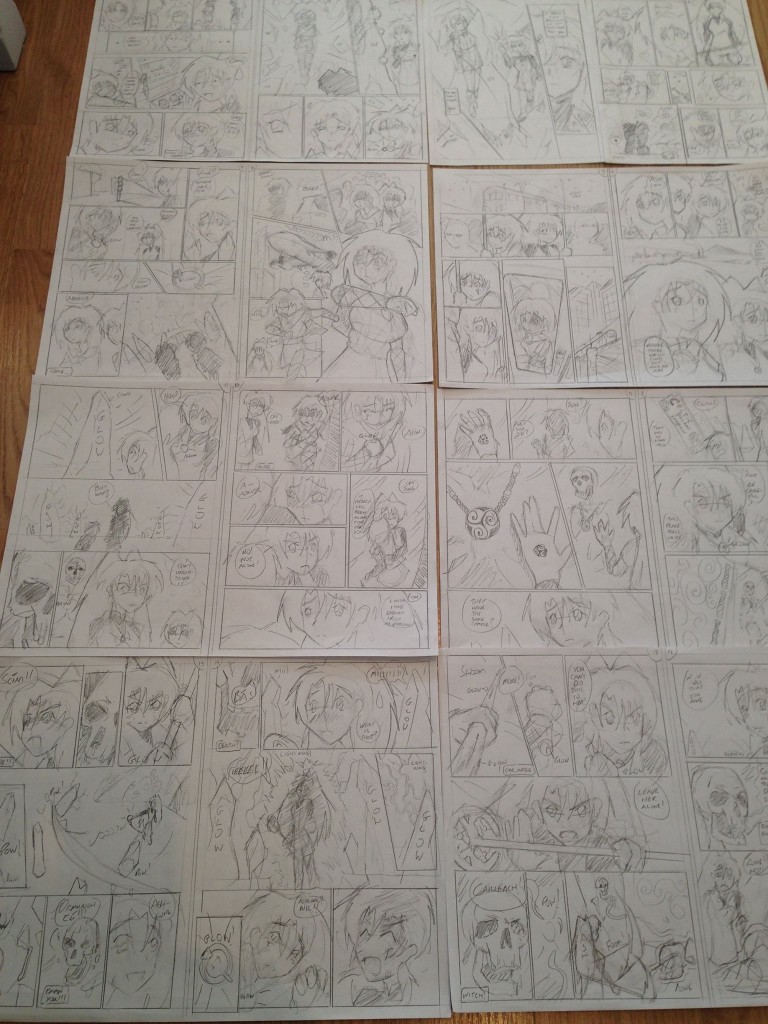NB! Japanese layout! Reads Right to Left!
This is me getting a little creative with the layout of Dublin. You don’t usually find stuff like that thing Aine just noticed on the streets there 🙂
Part 7: The Rookie Manga-ka Experience
When I had started the course with Nao and MSN, I wasn’t very certain what to expect. I was expecting maybe some kind of advice on page layout and then to work on the one-shot manga page-by-page for the duration of the course, with tips & advice throughout.
What I got instead was something a good deal more intense and thorough than that.
When we had settled on the one shot being based on Bata Neart, one of Nao’s first assignments for me was to create a rough draft plan of the 16 pages that I would ultimately draw. This took to form of several steps, starting with a basic time-line broken into 3 main sections and sub-divided into the various 16 pages. Finally a layout of the page itself was needed for all 16.
Although a very basic layout of the characters was all that was needed here, I felt compelled to put some effort into the artwork of the plan pages (because; how often do you get to pitch stories to a pro manga-ka?) However this served to compound an already stressful time. With the challenges related to having a new baby in the house, coupled with the lack of sleep, my day job, continuing updates for Back Office & Bata Neart, doing my homework was a challenge.
Especially when it ended up looking like this:
All 16 pages had to be done within a week, which is the heaviest production load I have ever had to handle.
However, despite my efforts, Nao would review my draft and then get me to do the whole thing again for the following week. The original draft of the story you are reading now is very different to the original draft I supplied to Nao and many aspects changed from that original idea.
It started off as a story set in Ballinafil that could very easily have fit in with the rest of the core Bata Neart continuity (which was sort of my own cheeky plan for it). Nao did not approve that because the story was not considering new readers. I was asked for another 16 page draft. Already exhausted from my last run of 16 I set into the next run anyway.
This time I re-tooled the story to be a condensed version Chapter 5, with Ashling finding Aine and the whole story transplanted to the more internationally familiar Dublin.
Nao reviewed it, made notes with me…and then instructed me to produce another 16 page draft based on the recommendations. And so…that’s what I did. I ended up redrawing the draft nearly 4 times before Nao finally suggested that the draft was good enough and that work could begin.
I had felt kind of run-out by then and had wondered if I had already failed in this course at it’s very beginning, given the amount of re-edits I had to do with the plan. But thankfully Nao reversed that feeling of failure by telling me that this was exactly what rookie manga-ka have to go though when dealing with editors.
My first lesson was more of a simulated experience of what it was like to be a rookie in the manga industry, and that felt kind of awesome…although tiring as hell…
With a plan in place, the work could finally continue.
Next time: Turning Japanese, and new paper!





So this used to be Áine’s home? Yeah, sorry hon, they’ve made a few renovations.
@Azrael: I’m not sure, but I don’t think that’s what Aine is seeing. It looks to me like she’s seeing into the other world, not reminiscing. In any case, even if she’d known the area before it became Dublin, I very much doubt she’d be able to recognize it at all. It’s pretty unlikely any landmarks would have survived.
@Azreal: Cheating again with Google Translate? 😛 It’s true that she is saying ‘Home’, but it more like that exhibit is reminding her of home, than it actually being from home.
(I actually haven’t fully settled on Aine’s Prime-canon home. Right now I’m considering the Aran Islands)
@Kessy: All that really survives from pre-Norman Dublin are some bits of Viking Dublin (and even then, not much of that).
Dublin was very heavily developed during the 18th and 19th centuries, and became the British Empire’s second city after London for a while. The original layout of the River Liffey is now encased with several kilometers of quays and reclaimed land. Many of the tributaries are now flowing underground. The old city is mostly on the southern bank of the Liffey and some of its earlier Norman layout is alluded to by the cobble-stone streets in the Temple Bar district. The rest of the city resembles a typical modern British Georgian-design city.
Nothing survives of pre-Viking Dublin that we are aware of. Dublin’s Irish name ‘Baile Atha Cliath’ however alludes to an original Gaelic settlement that served as a crossing point across the Liffey (Atha can mean ‘crossing’). This was likely destroyed during the Viking invasions and subsequent wars.